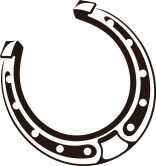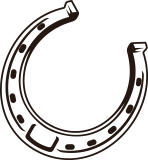The O.K. Corral Series Mission Statement
The O.K. Corral Series educates, promotes, and supports professionals in the practice of authentic equine-assisted work. Authentic equine-assisted work honors and integrates natural horse and herd behavior as a model for human mental and emotional health using the equine-assisted philosophies developed by Greg Kersten, Founder of Equine Assisted Psychotherapy.

Train where “the experts” train
We live in a competitive world, and, unfortunately, the equine-assisted fields haven’t escaped the trend. People are reluctant to acknowledge humble beginnings or give credit where it’s due. You see, they believe that in some way it takes away from their status to lift up someone else. We don’t subscribe to that philosophy. Every day we look for ways to honor and celebrate OK Corral members who are making the most out of their unique skills and talents – and we are so grateful to play any role, however small, in their confidence and success.
As you shop around for a training organization or a certifying agency that will help you make the most of what you bring to your practice, it may help to know that most of the equine-assisted trainers and organizations today represent people who were trained first by Greg Kersten. If someone was trained or certified by Equine Services Inc. from 1994 – 1999, EAGALA between 1999 and 2005, or the O.K. Corral Series from 2006 to today, you can bet that WHAT THEY LEARNED was taught by Greg Kersten (or someone he had trained). And that pretty much covers your current choices in the arena of equine-assisted certifications. THAT is why we proudly recommend, “Get your EAP from the source.”
Equine-assisted history
In the early 1990s, Greg Kersten created the term “Equine Assisted Psychotherapy” to describe the specific work he was doing with horses and at-risk youth who were incarcerated or in treatment. At the time, no one had ever used the phrase “equine-assisted” to describe the powerful healing and informative powers of horses on the lives of humans. Kersten published the first Equine Assisted Psychotherapy training manual in 1995 through his corporation, Equine Services, Inc., and began to certify professionals in the practice of EAP, using core principles and specific exercises he had found to be particularly effective in his work.
Equine-assisted psychotherapy (EAP) and equine-assisted learning (EAL)
Equine-assisted work honors the natural behavior of horses and herds. Horses are skilled at keeping themselves safe and adept at survival; their natural behaviors are optimal for mental and physical health. In many respects, humans have lost the instinct to keep themselves safe and healthy. We entrust horses to show us the way back to health. Work and observation in the horse world lends itself to extremely powerful metaphors into our own patterns, strengths, and the non-verbal messages we send out. Equine Assisted Psychotherapy implements the power of equine-assisted principles and exercises to introduce therapy clients to themselves in a modality that has been found to be more efficient and less threatening than traditional talk therapy. Equine-Assisted Learning (EAL) is a field of practice based on the successes of Equine Assisted Psychotherapy. We have learned that everyone can benefit from equine-assisted work – not just therapy clients. EAL uses equine-assisted principles and exercises in a variety of “arenas” from corporate retreats, to church groups, personal coaching, parenting and family dynamics and more!
Principles of EAP
Particular principles and exercises (based on equine behavior) are integral to the understanding and practice of Equine Assisted Psychotherapy. There is valuable training in the world of equine-facilitated work, but if it does not include the following components, it is not genuine EAP as intended by the Founder of the field.
Pressure/pain:
Awareness of how our equine counterparts respond (physically or mentally) to pressure (physical or emotional) and pain (physical or emotional) can give us insight into our own responses. Do we know when we are feeling pressure versus pain? Do we respond appropriately and healthfully? Horses teach us how to evaluate and respond to the world around us.
Attention/At-Ease:
Both aspects of life are essential, but not necessarily in equal parts. Horses have mastered their individual balance between time at attention, and time at-ease. We learn to identify our own needs and imbalances, as well as those of the people around us. This simple, yet profound principle teaches us to be more effective communicators, businesspeople, friends, and human beings.
The Re-Circle:
New and unknown circumstances elicit a notable response from horses. Typically physical, this response demonstrates a safe, measured, and therapeutic way for humans to confront the more fearsome aspects of life. A mental metaphor can be made to signify the physical Re-Circle Process to optimize our way of perceiving and thinking about situations we encounter every day.
Push/Pull:
Horses provide both physical and emotional metaphors into our own behavioral patterns. When do we push? When do we pull? Do we do one more than the other? When do we push and when do we pull? How does our pushing and pulling behavior affect others?
The Nonverbal Zones:
Do you know what you are saying when you aren’t saying anything? Horses make good use of their body language to convey the most basic and important messages to each other. Humans do the same. Sometimes what our mouths say is not in alignment with what our bodies say. The three non-verbal zones identified in EAP instruct us to be more effective communicators by aligning our verbal and non-verbal messages.
Herd Versus Pack:
One of the most dynamic and powerful principles of the Equine-Assisted Philosophy is the comparison of herd versus pack behavior. The characteristics of natural herd behavior can inform our sessions and allow humans to leave their pack instincts behind in favor of a more harmonious and healthful lifestyle.
Fundamental EAP Exercises:
The following signature exercises were created by Greg Kersten with the help of countless at-risk youth he served in the 1980s and 1990s. The exercises were first published and copyrighted in the Equine Assisted Psychotherapy training manual, published by Equine Services, Inc. in 1995. New exercises are being created every day, but these exercises have become synonymous with Greg Kersten and EAP.
The most effective equine-assisted exercises will always be the most basic and straightforward. Complicating exercises with too many components, rules, or consequences tends to cloud the meaning and make metaphors more difficult for clients to understand.
“CATCH AND HALTER”
“LUNGING”
“EMERGENCY DISMOUNT”
“THE LIE DETECTOR”
“GROUND TIE”
“TEMPTATION ALLEY”
“EXTENDED APPENDAGES”
“LIFE’S LITTLE OBSTACLES”



